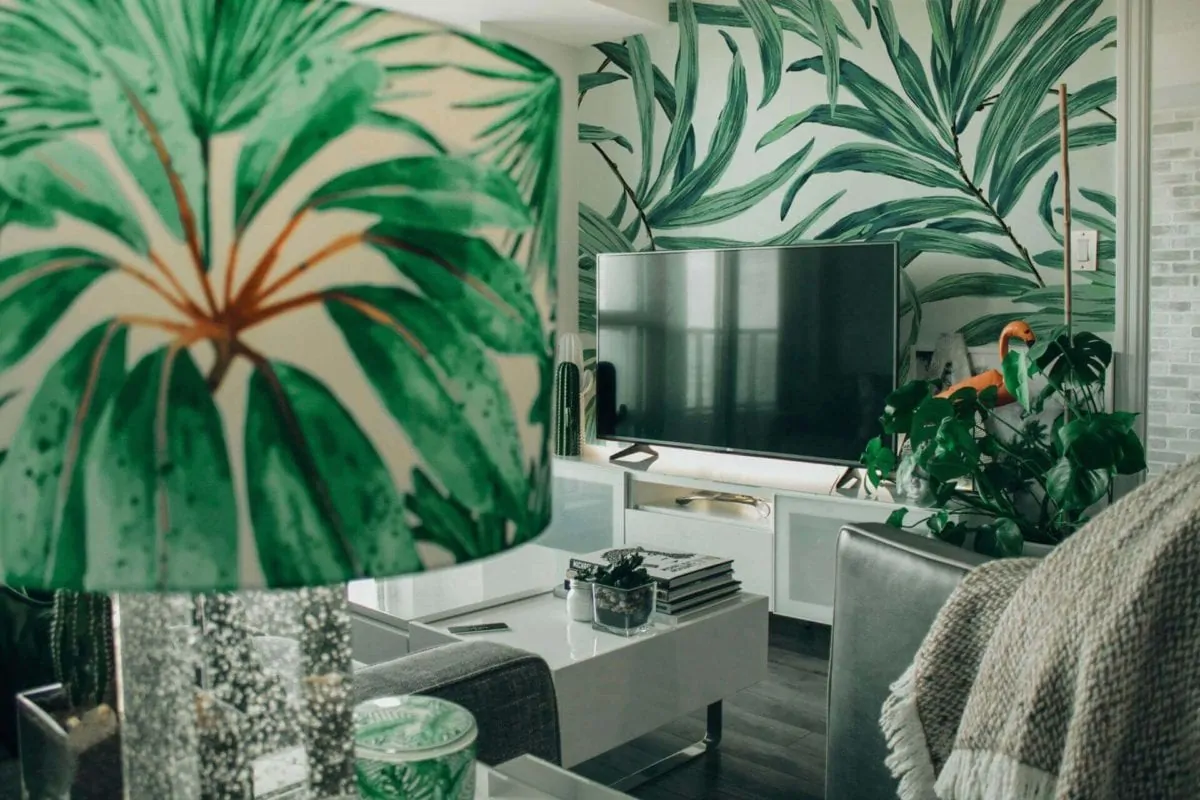

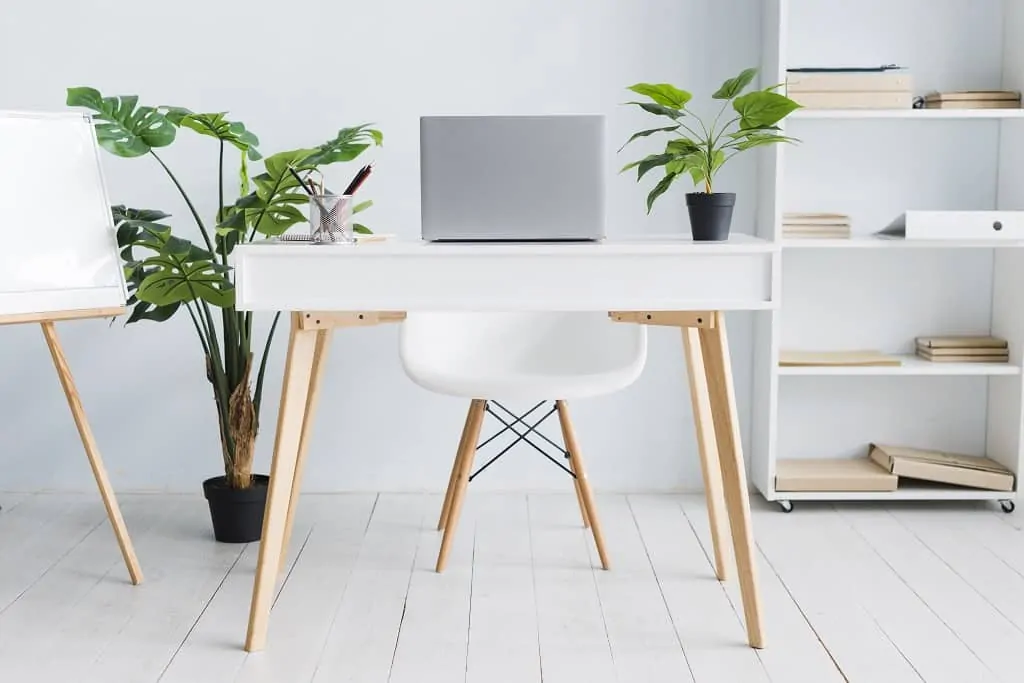
Having some plants in the office comes with multifold benefits, from stress reduction and cleaner air to sharper focus and higher productivity, all backed by science. In other words, office plants are a huge win-win for both employees and employers. However, choosing the best office plants is not easy, as you need some that require little maintenance. Moreover, when you get the best plants for the office, you should know from the start if they will endure.
Many of us may no longer spend a full five days a week in an office, but Gary Altman, director of the horticultural therapy program at Rutgers University, says that this “does not imply office spaces should become sterile, lifeless places of labor.” “Especially when there are many plants that can survive for extended periods of time without much water or care.”
Did you ever ask yourself what keeps offices from investing in more greenery? Many office dwellers are brown thumbs by design, so green living things usually don’t have a bright future ahead of them.
That’s why we handpicked the absolute best office plants for the rough conditions in an office to help change that. Some of these beauties are almost indestructible and can go for months without a drop of water. Pick out your favorite!
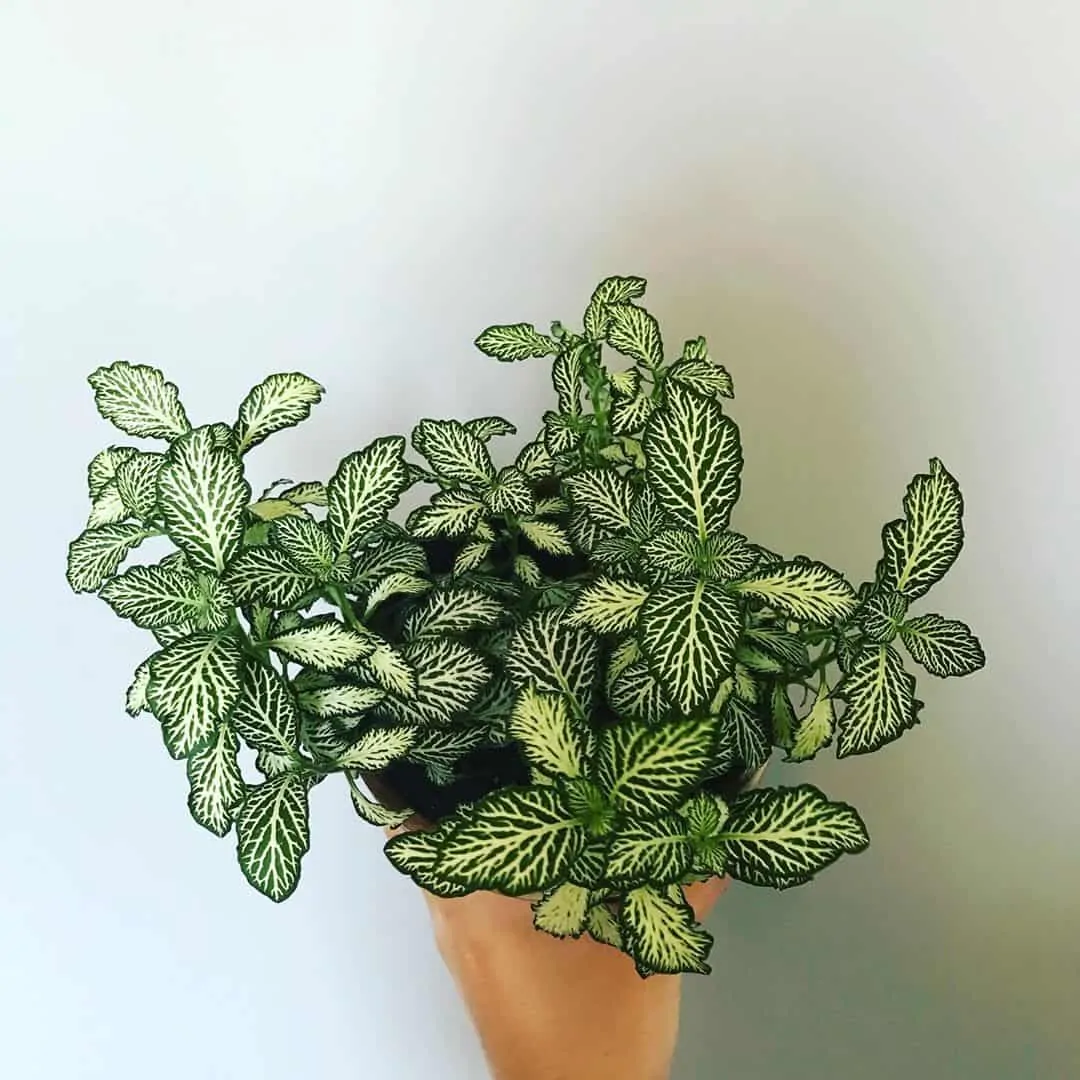
Image credit: Plantsmonika via Instagram
The nerve plant is one of the best office plants for low-light conditions. In case you want one for the home, remember that it is also an amazing shade plant that can spruce up a darker room or bedroom corner.
This plant easily thrives in dimly lit rooms or even on a windowsill as long as the light is filtered. When placed in full sunlight, the delicate nerve plant may wither, and its leaves may burn. Since it is a tropical plant, this eye-catching houseplant loves plenty of humidity, so water the plant as soon as you notice the upper layer of the soil gets dry.
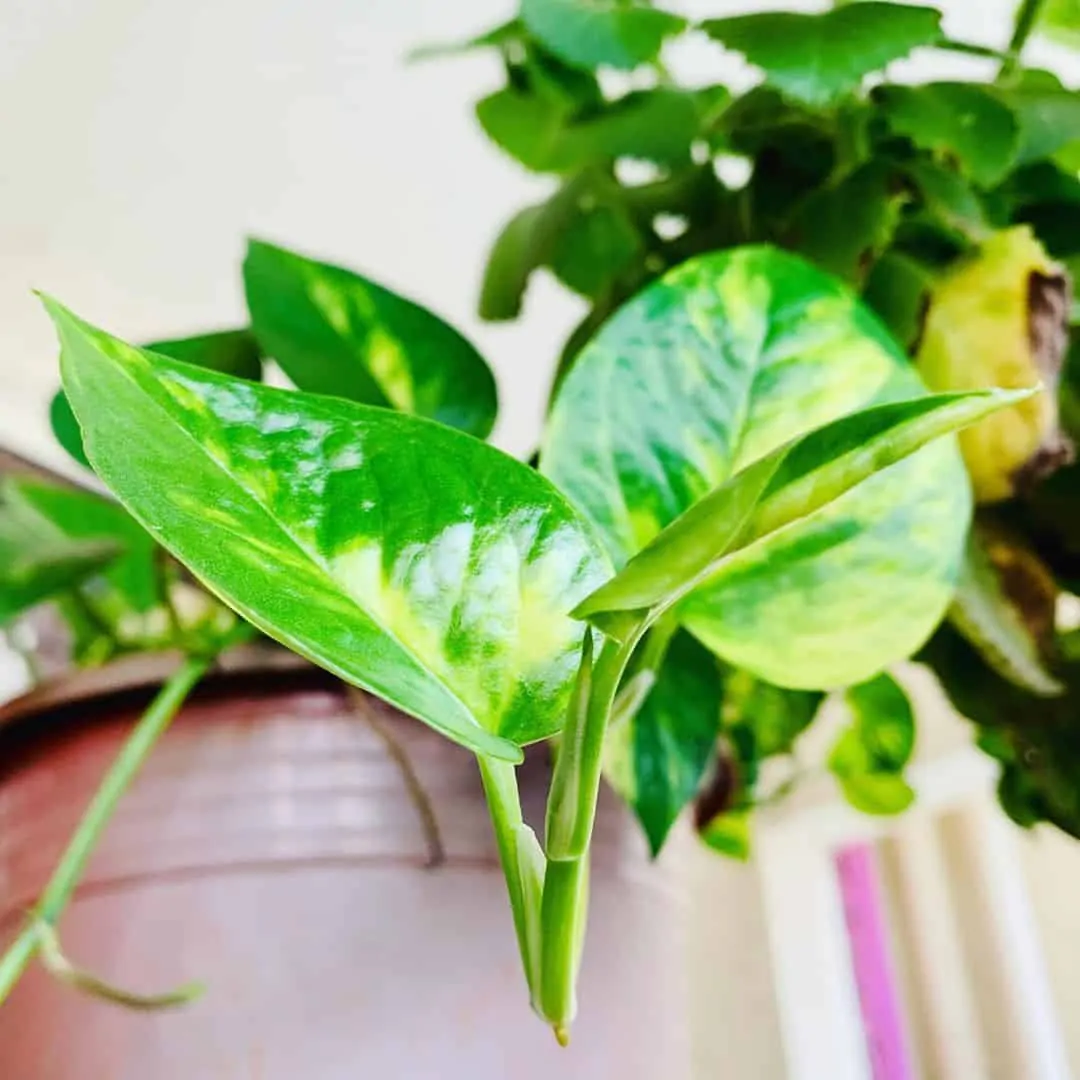
Image credit: Sonal_Artowls via Instagram
Pothos is an incredibly low-maintenance houseplant that also goes by the name of the devil’s ivy because of its high toxicity, especially for pets and kids. It makes a great addition to any office as it thrives in indirect lighting conditions, adapts to low-light settings, and makes a great natural air purifier. A NASA experiment has shown that golden pothos is one of the most proficient household plants at removing formaldehyde and other extremely toxic indoor pollutants from the air.
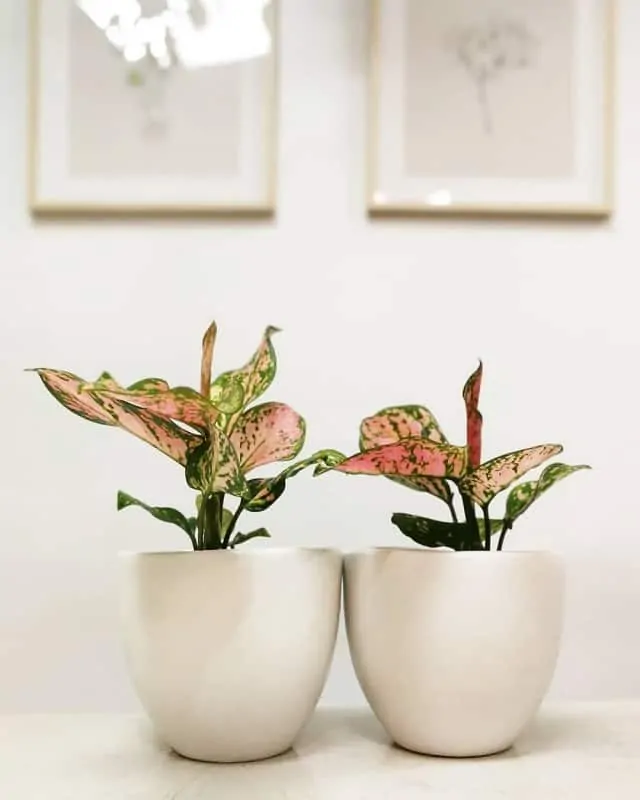
Image credit: Planttherapy.yvr via Instagram
The Chinese evergreen is a great air purifier plant as well, according to the said NASA experiment. It also makes a great household plant for absolute beginners or for people that are too busy to pay too much attention to it, like your regular office dweller. This plant impresses with its patterned deep green foliage. In Chinese culture, the Aglaonema is a symbol of longevity.
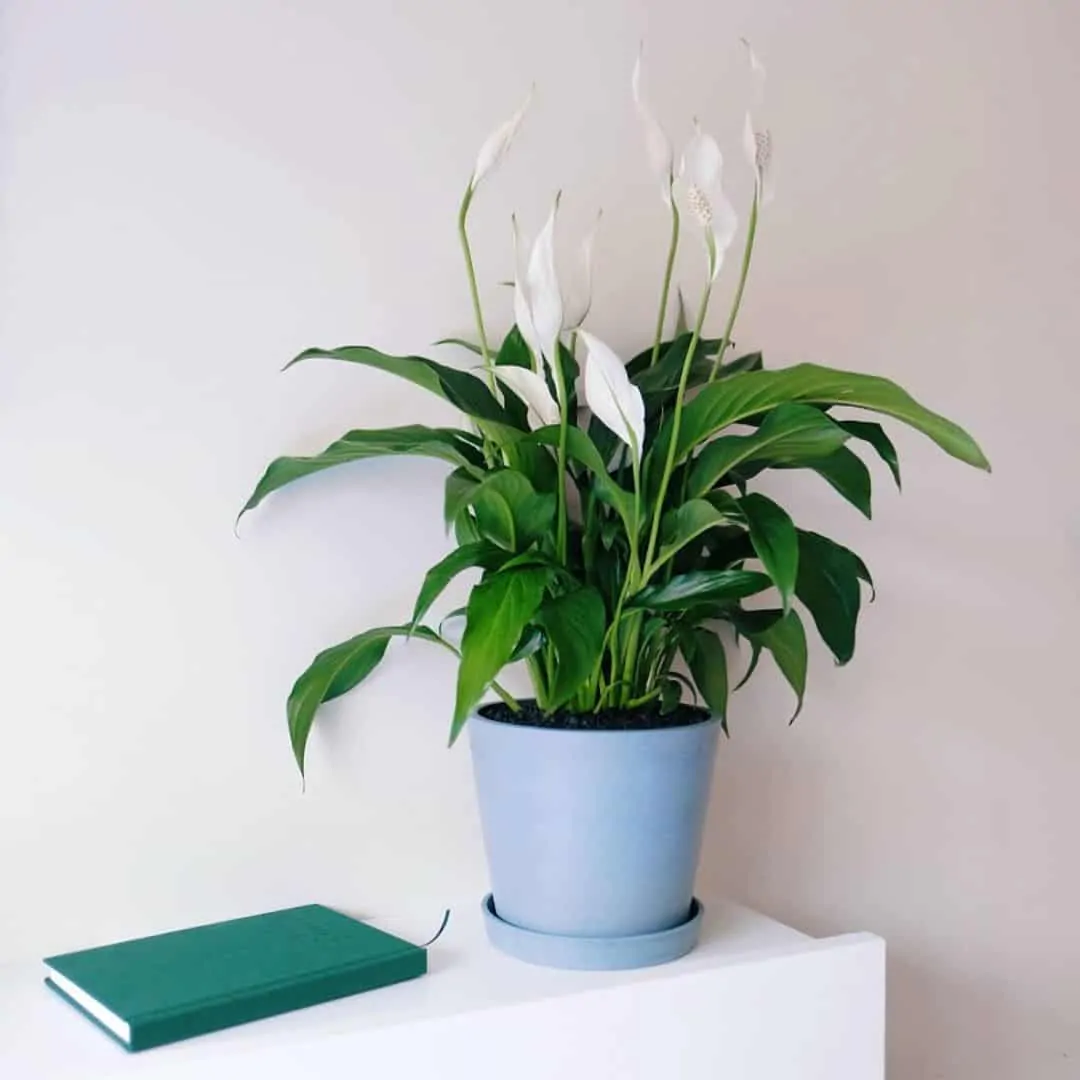
Image credit: Naturescolours via Instagram
The peace lily comes with a prolific deep green foliage and eye-catching white flowers. This plant thrives in office conditions like no other, but in order to enjoy its blooms, make sure that it is placed in a bright room or a spot with indirect sunlight. Also, peace lilies may not like the chemicals in tap water, so it is best to use filtered water instead. This low-maintenance plant is a great air purifier and humidifier which makes it a great addition to offices, especially in dry climates.
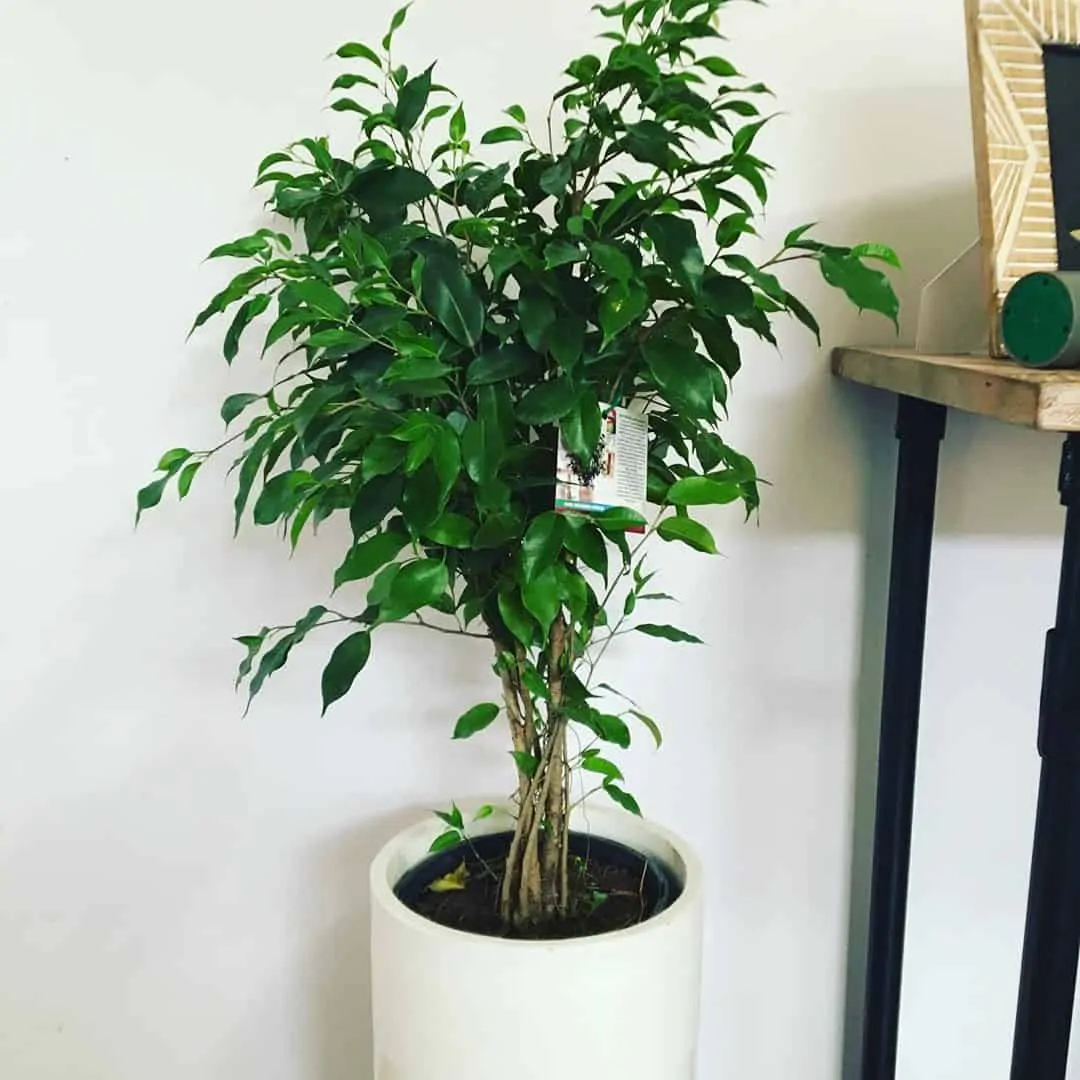
Image credit: Platifulobsession via Instagram
This Ficus plant with its long pointy leaves and slender trunk is a very decorative addition to any office and indoor space. The weeping fig is one of the best office plants because it is low maintenance, it is simple but elegant, and it is highly effective at removing harmful air pollutants such as formaldehyde xylene, and toluene.
Remember that this type of indoor tree is also one of the most common houseplants in existence, not only one of the best plants for the office. In other words, you can get one for the living room and your office, respectively. Trust us, its maintenance will not be a problem.
There’s also a bonsai-like variety which we recommend for small offices and a small tree-like variety, which is great for larger spaces. The only drawback of this beautiful plant is that it doesn’t like to be moved around at all. It may start to shed leaves if disturbed, but it should rebound quickly.
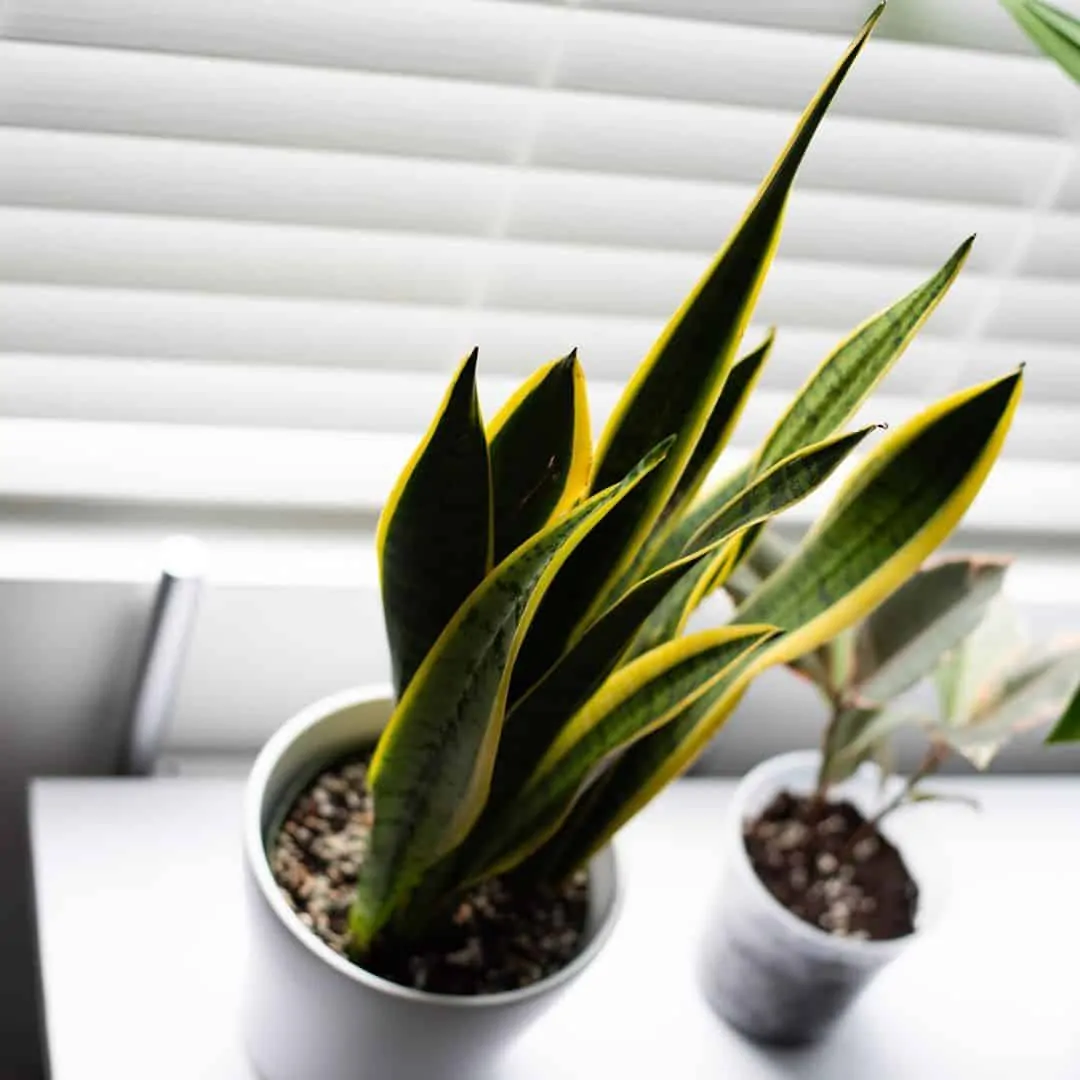
Image credit: Fightingmouse via Instagram
The Snake Plant is one of those office plants that is anecdotally hard to kill. The plant can easily survive up to one month with no water. It can adapt to both low light and direct light and thrives in dry air conditions unlike any other, which will make it one of the most resilient plants in your office. Its name was inspired by its silvery green leaves adorned with dark green stripes. It comes in many varieties, but the most popular ones are the Sansevieria laurentii (pictured above) and the Sansevieria zeylanica.
Check out our related post: Snake Plant Care Guide – How to Grow This Houseplant
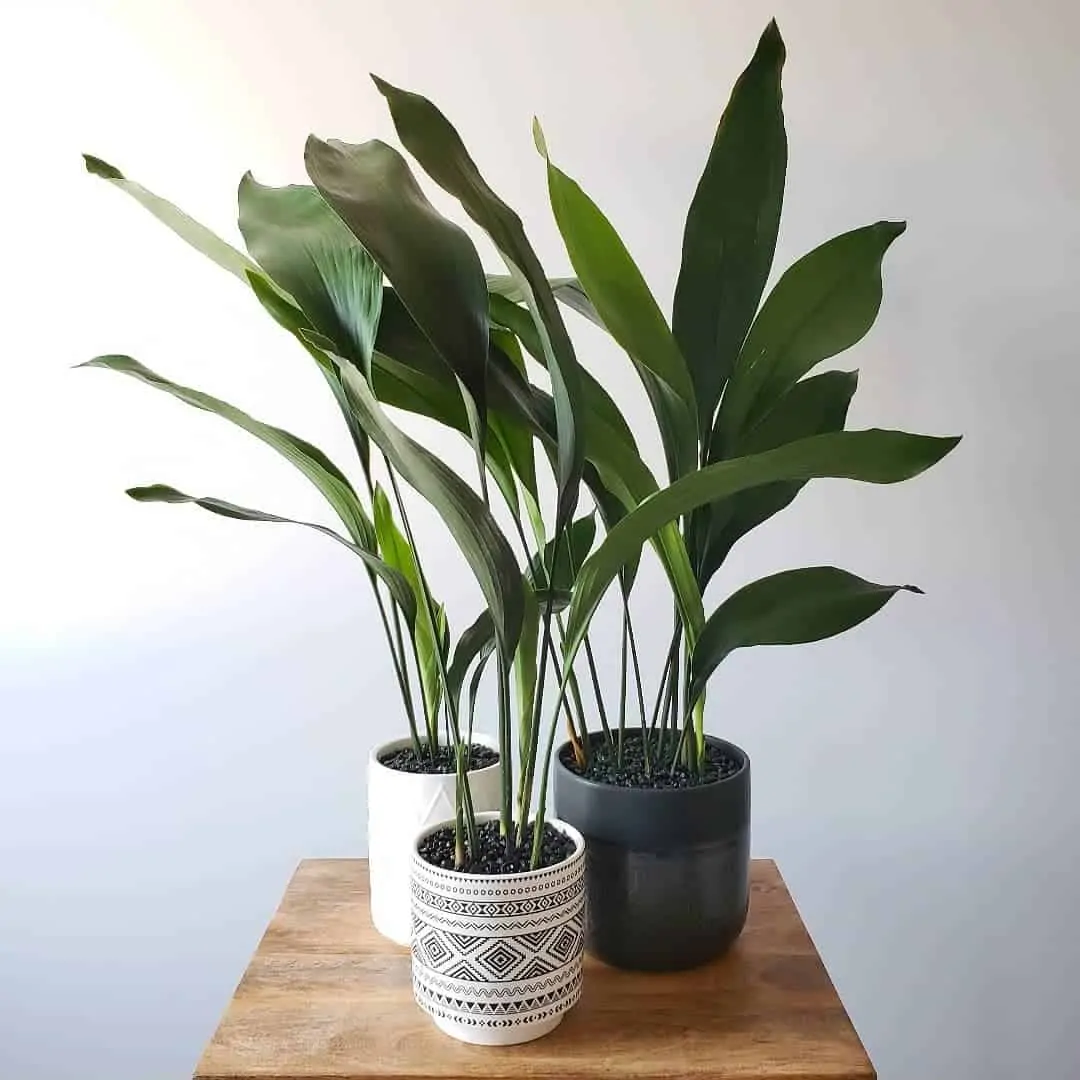
Image credit: Botanicalsmh via Instagram
Here’s another office plant that can take plenty of neglect and abuse like a champ. The cast iron plant can survive nearly anything from very low light conditions and scarce watering to depleted soils and abrupt temperature variations. This low-maintenance beauty from the lily family literally thrives on neglect so it makes the perfect choice for any black thumb in a dimly lit office. If it doesn’t die in an accident, the cast iron plant can reach up to 2 feet high.
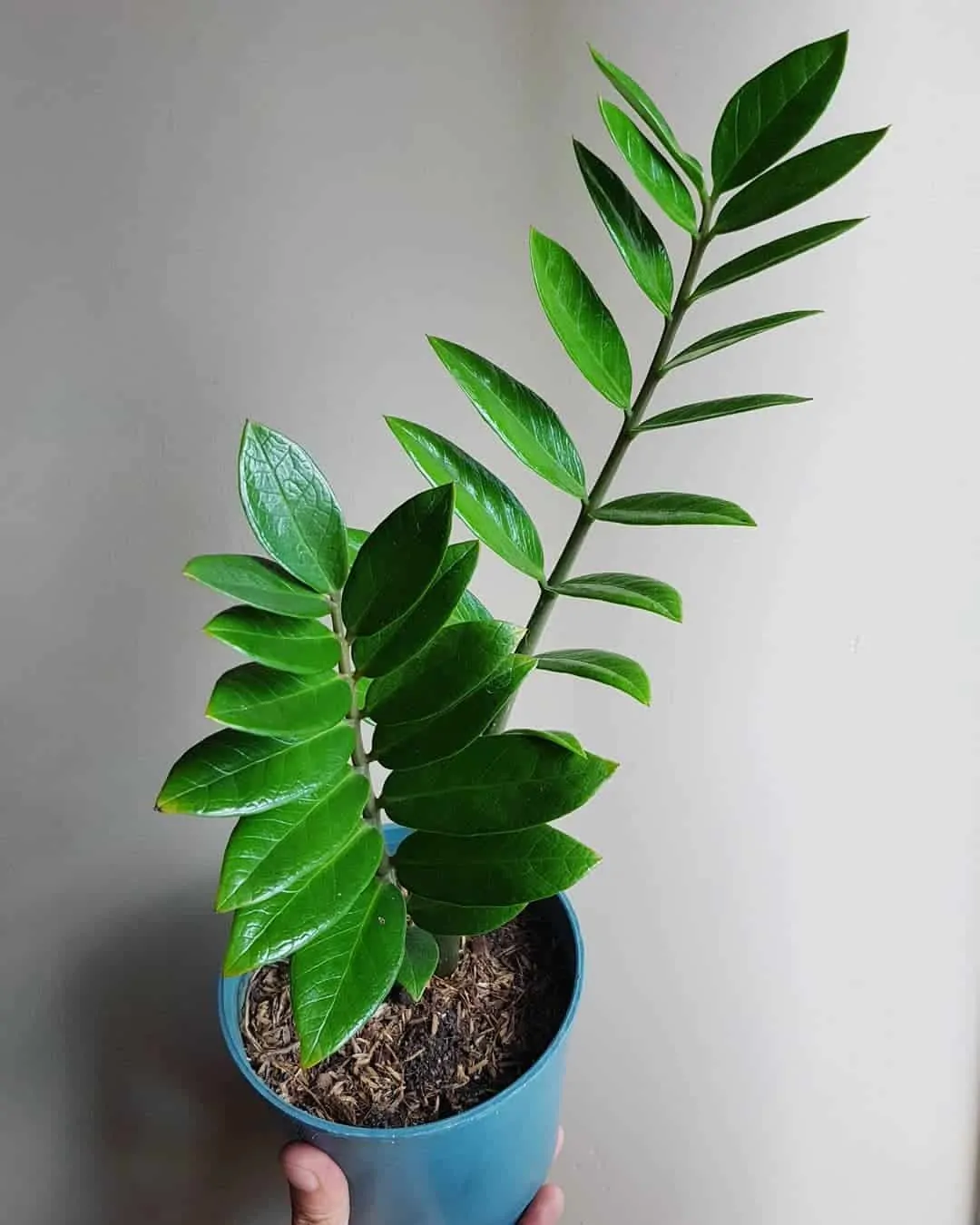
Image credit: Plantsofabundance via Instagram
Meet the uncrowned ‘king of the indestructible plants.’ The Zamioculcas zamiifolia can survive for months without water, feels comfortable in super dry conditions, and doesn’t seem to be bothered by low light one bit. It is believed that it can survive up to four months with no water. What’s more, the Zamioculcas zamiifolia somehow manages to still look pretty and glossy after tons of abuse and neglect, which makes it one of the best office plants out there.
We have talked about the ZZ plant before when we discussed the most common houseplants, but it is worth a mention here, as this resilient, beautiful, and enduring plant can turn your workspace into a thing of beauty.
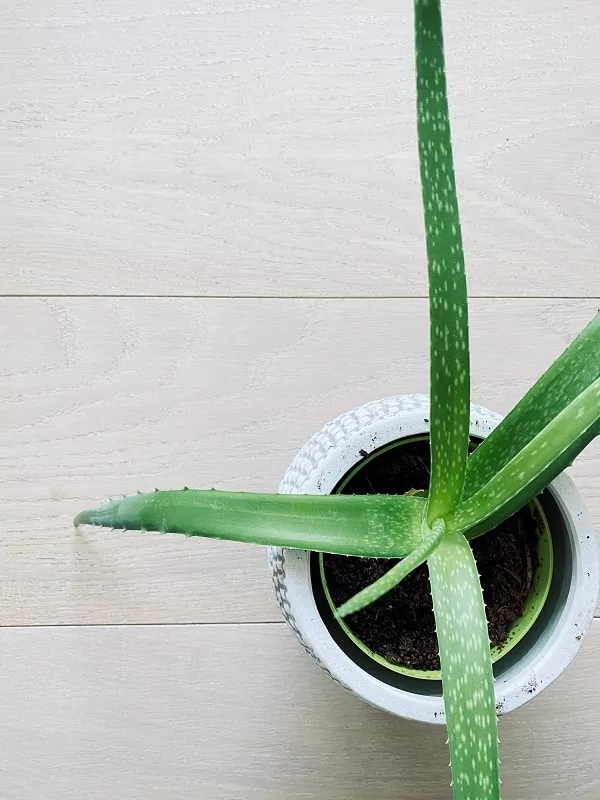
Image credit: Alanah Light via Unsplash
Aloe Vera is low maintenance but versatile plant to have in your office. It thrives in bright but indirect light and needs very little watering. If you want to learn more about aloe vera and its best maintenance conditions, check out our Easy Aloe Vera Plant Care Guide!
The aloe gel in the leaves has been known for its medicinal properties since time immemorial. The gel is a quick fix for minor burns and paper cuts and can be ingested diluted in a glass of water to alleviate abdominal pain and other IBS symptoms.
Aloe vera is also a great air purifier, getting small spaces and rid of harmful chemicals such as formaldehyde and benzene in a safe and natural way. As an added bonus, aloe vera is a very prolific plant as it occasionally sprouts babies which can be re-potted and further multiplied.
Check out our related post: 15 Types of Aloe for the Succulent Fanatic.
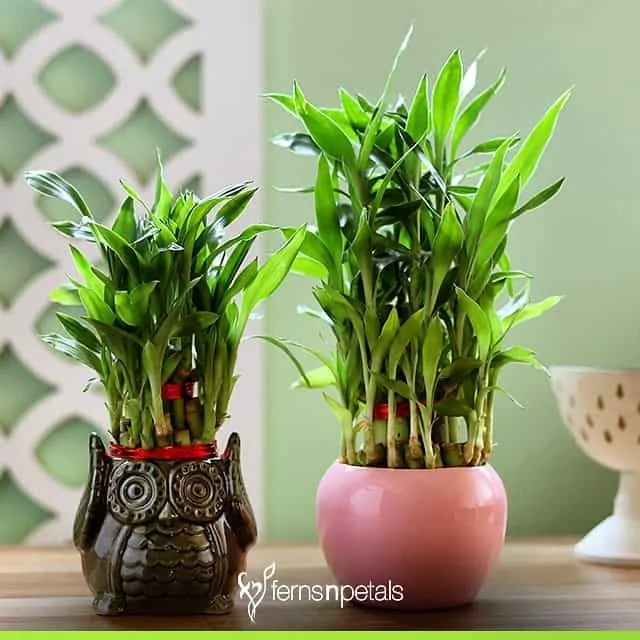
Image Credit: Fernsnpetalsindia via Instagram
Get a Lucky Bamboo for your office if you want an interesting and easy-to-care-for plant that thrives in shady corners. Despite its name, the lucky bamboo is not a genuine bamboo plant even though it may look like one. It is a dracaena plant that has been thought to bring happiness, longevity, and prosperity for thousands of years in China.
Lucky bamboo grows both in soil and in water, but it is best kept in soil. It is an ideal plant for offices without an excess of natural light. Lucky Bamboo belongs to the hardiness growing zones of 10–11. If you want to learn more about what plants grow best where we recommend you read our guide on USDA Hardiness Zones for Plants and Edible Gardens.
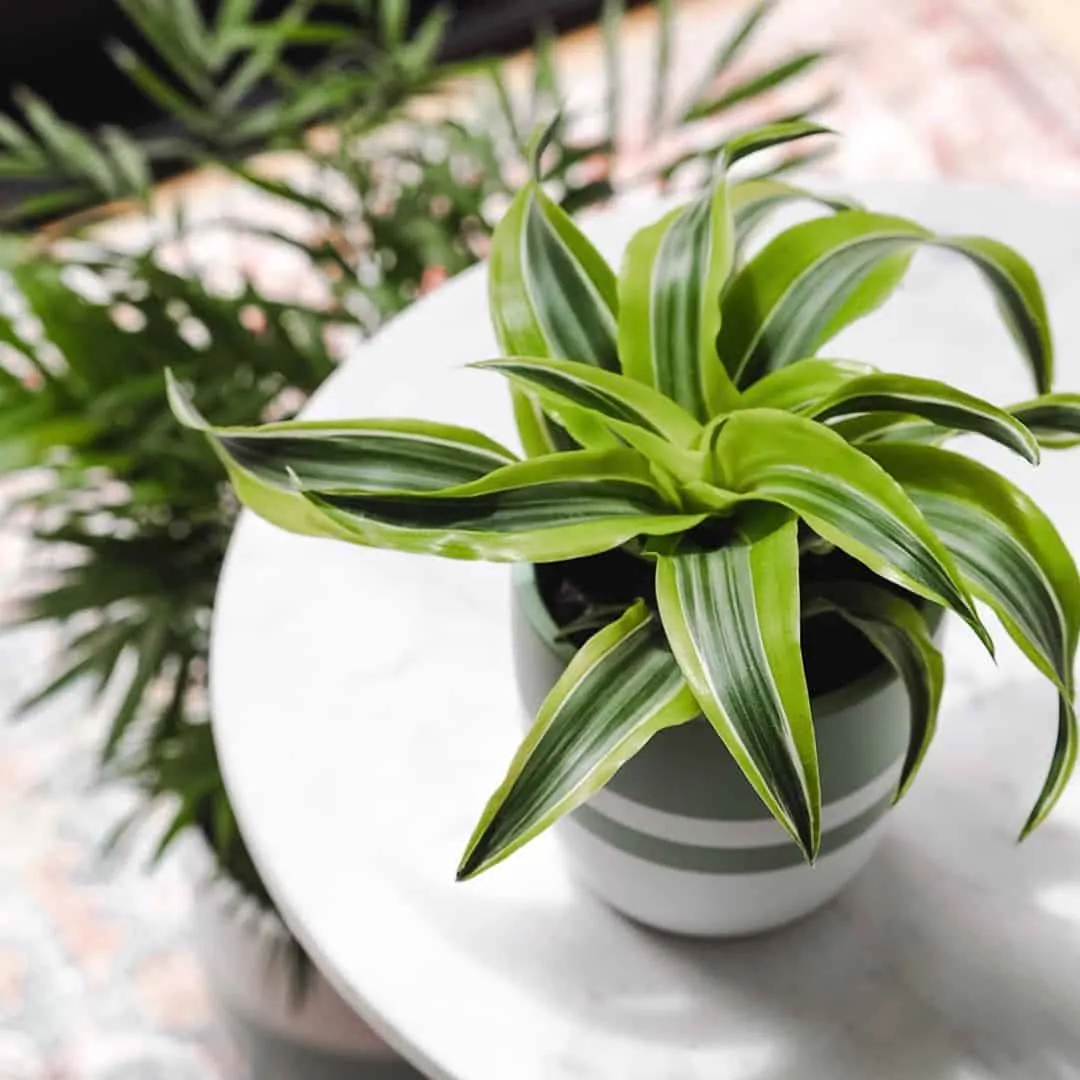
Image credit: Anselandivy via Instagram
The lemon lime dracaena is a splash of color with its green and bright yellow striped leaves that can easily thrive in a low-lit corner. It also goes by the name of ‘corn plant’ due to its foliage that is very similar to a cornstalk. The lemon lime dracaena doesn’t need a lot of love and attention to grow and makes an excellent air purifier according to NASA researchers, which makes it an ideal denizen of a busy workspace.
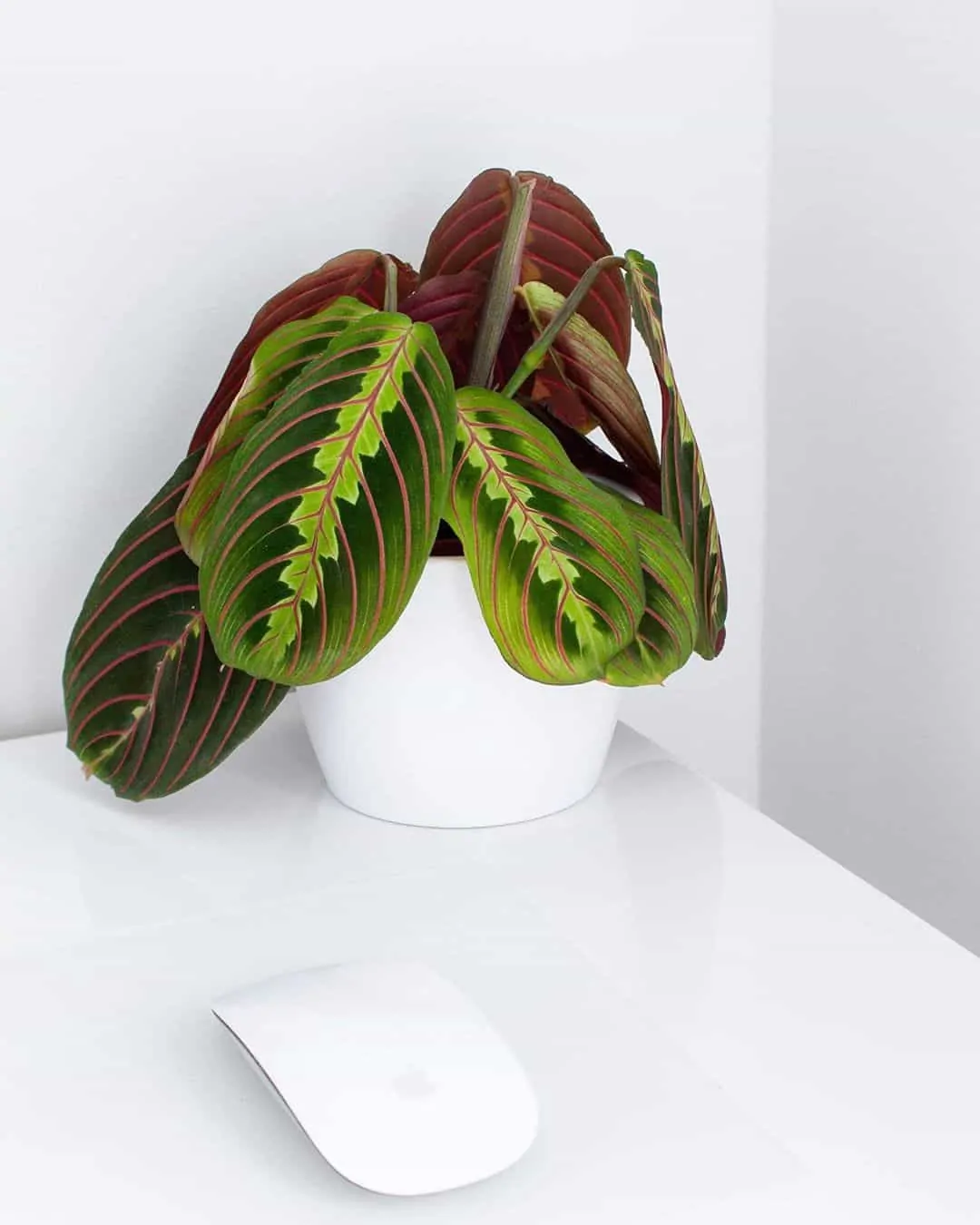
Image credit: Hoopsplants via Instagram
The Prayer Plant is another interesting office plant, with velvety dark green, purple and reddish leaves that fold themselves shut at dusk as if the plant were praying. It is also known as the Ten Commandments plant after the ten dark green stripes on each leaf on some varieties. This plant doesn’t like direct sunlight and can put up to a lot of neglect, which makes it ideal for low-light offices. It may produce small white or purplish flowers, but don’t expect anything spectacular.
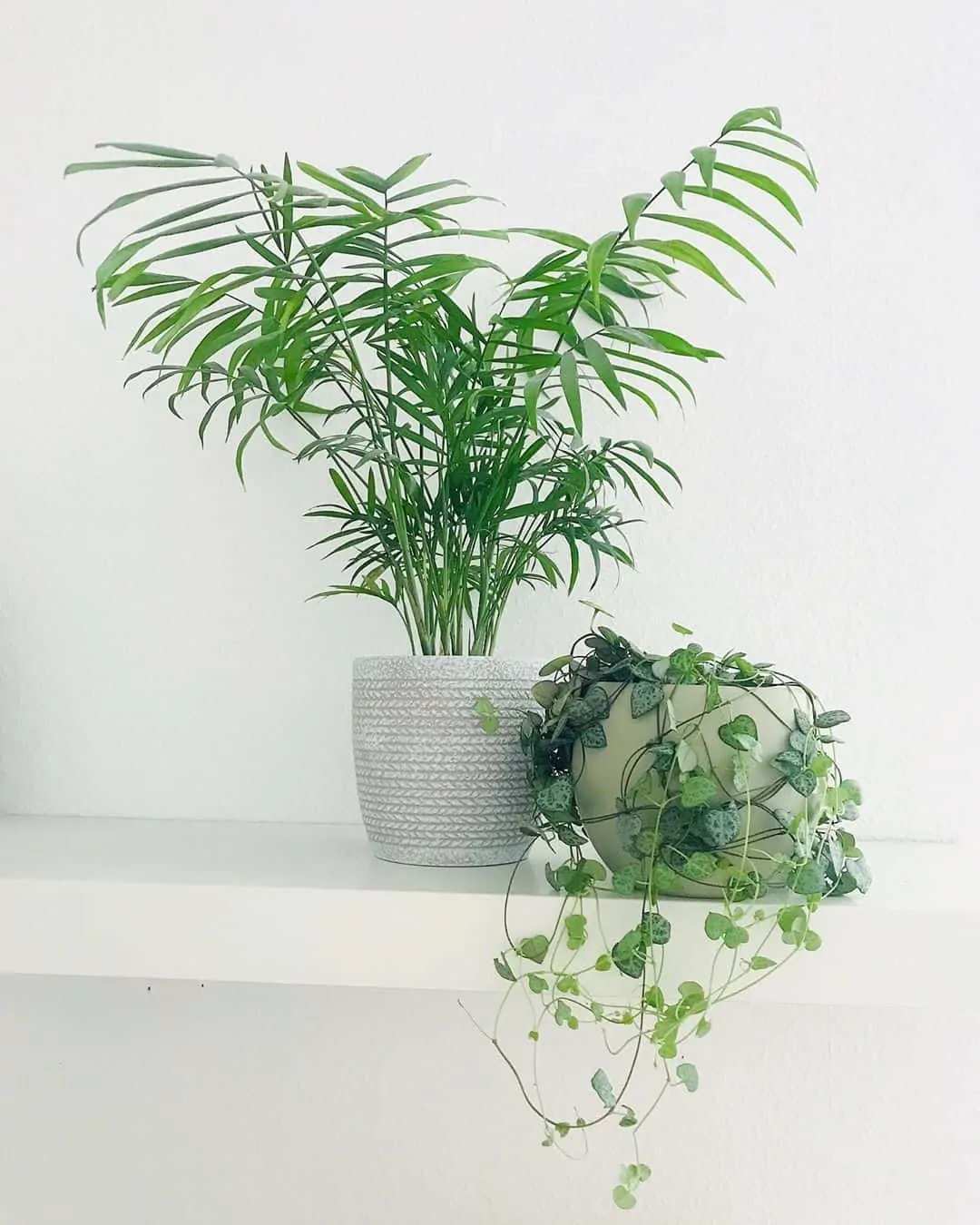
Image credit: Lore_85 via Instagram
This exotic plant with showy arching fronds and beautiful narrow leaves is a showstopper in any large indoor space. The butterfly palm (pictured left) can reach heights of up to 8 feet and will thrive in warm and bright conditions. It also makes a great air purifier, as it releases oxygen and feasts on harmful air pollutants. It makes a great statement plant in an office if well cared for.
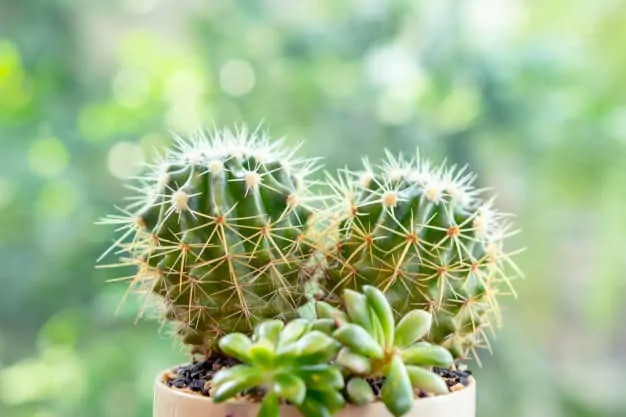
Cacti are the most popular succulents in the nation’s offices. There’s hardly any workspace without a cactus in it. Cacti are easy to care for, can go weeks without water, and thrive in seriously dry conditions. What’s more, the humble cactus is believed to feed on harmful EMF radiation coming from electronic devices, such as computers and mobile phones, and nearby cell towers, which makes it a great ally in cancer prevention.
You may think that cacti need no maintenance at all – they do grow in some of the aridest and most adverse locations and conditions on the planet. However, if you want to learn more about cacti and succulents, we suggest you read our guide on How to Care for Succulents and Cacti Indoors.
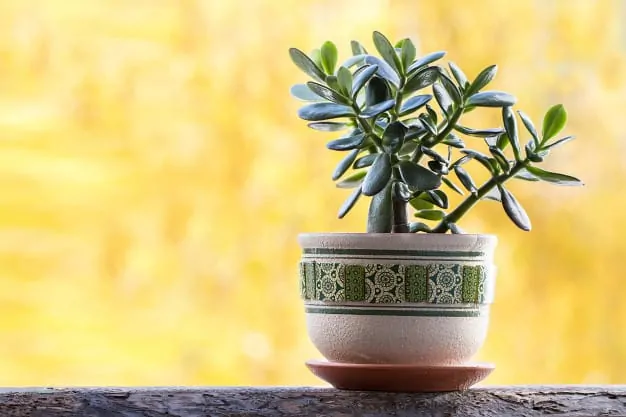
Just like cacti, the Jade Plant is a great water-retaining plant as it stores water in its round, waxy leaves, and goes dormant if there’s too much time between drinks. The Jade Plant is one of the best office plants because it is low maintenance, is highly decorative due to its mini-tree shape, and extremely low maintenance. It also goes by the name money plant or money tree but not because money grows on this mini tree; rather it is believed to bring prosperity to its owners as it is a worldwide symbol of growth and renewal.
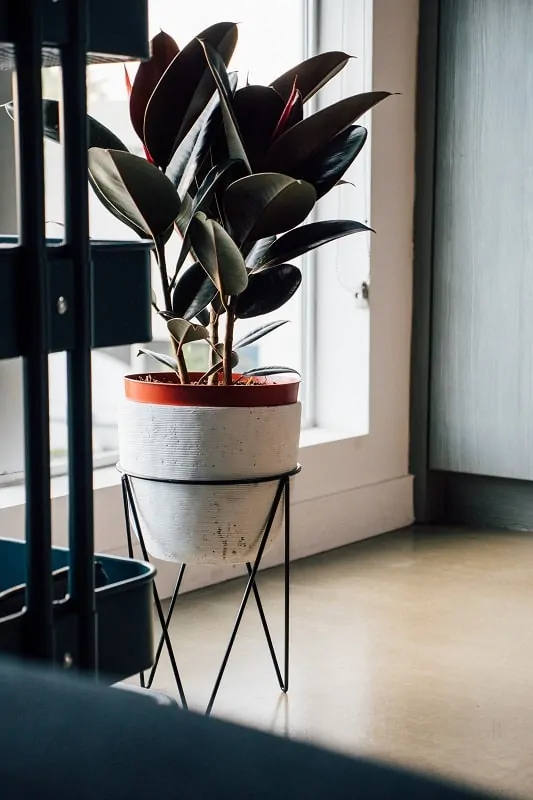
Image credit: Mike Marquez via Unsplash
The Rubber Plant is a low-maintenance perennial but it can grow quite tall, so make sure that you have plenty of space in your office for this looker. The same goes if you want to grow it inside the house.
With its large glossy dark green leaves and elegant figure, the rubber plant can easily morph into a statement plant in any decently sized office with low light conditions. This tough indoor tree guy can thrive in the shade. Rubber plants are also one of the best office plants for their air-purifying properties since their large leaves are excellent at capturing toxic airborne particles and rendering them harmless.
Check out our related post: Rubber Plant Care: How to Grow this Tree Indoors
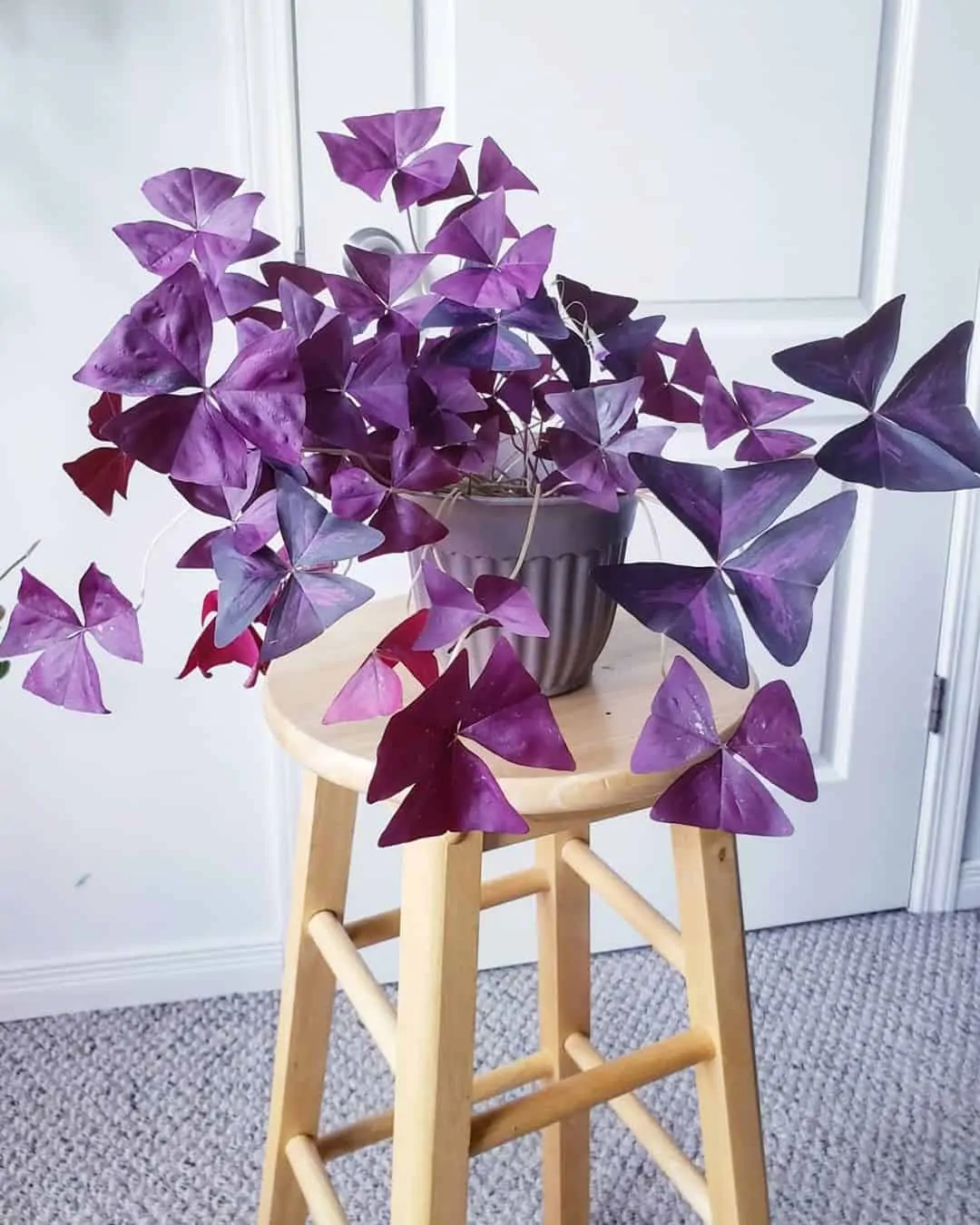
Image credit: Plantmomjess via Instagram
This shade-loving plant is the perfect inhabitant of an office’s shady corners. Oxalis comes in hundreds of species, but the Oxalis Triangularis is one of the family’s shining stars. It is very similar to clover and it stands out because its beautiful burgundy leaves shut down when there’s too much sunlight coming their way. The Oxalis Triangularis is a low-maintenance but forgiving household plant that’s a joy to look at and care for.
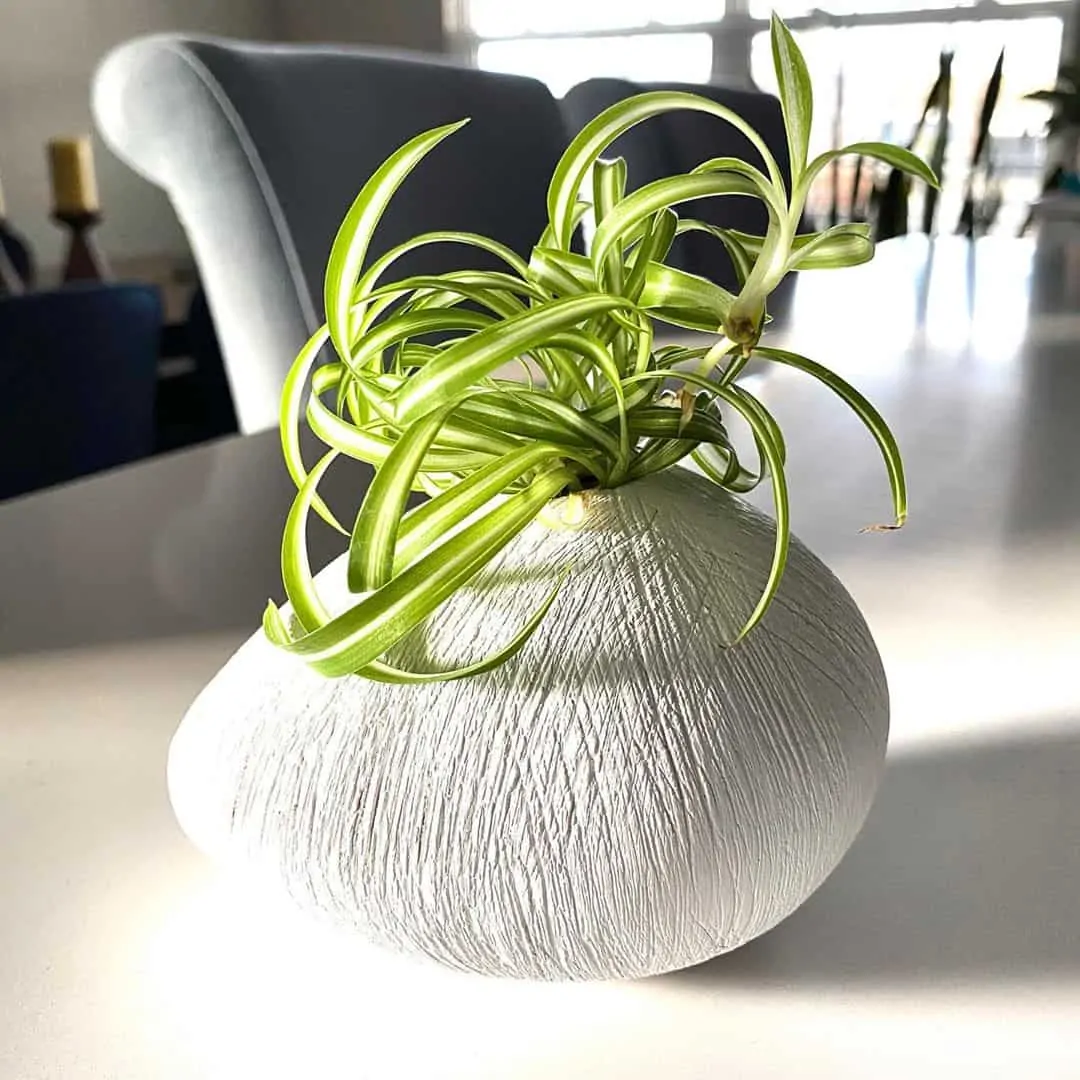
Image credit: Twigwickers via Instagram
Spider plants are adaptable, durable, and can withstand some serious mistreatment. Plus, they multiply like crazies as they grow ultra-fast and churn out lots of hanging pot-ready babies while at it. They like bright light, but they can adapt to low light conditions and artificial lighting as well. They prefer a hanging basket, but you could try keeping one in a highly decorative pot as well for a splash of curly greenery on your desk.
Check out our related post: Spider Plant Care Guide: How to Grow Healthy Spider Plants
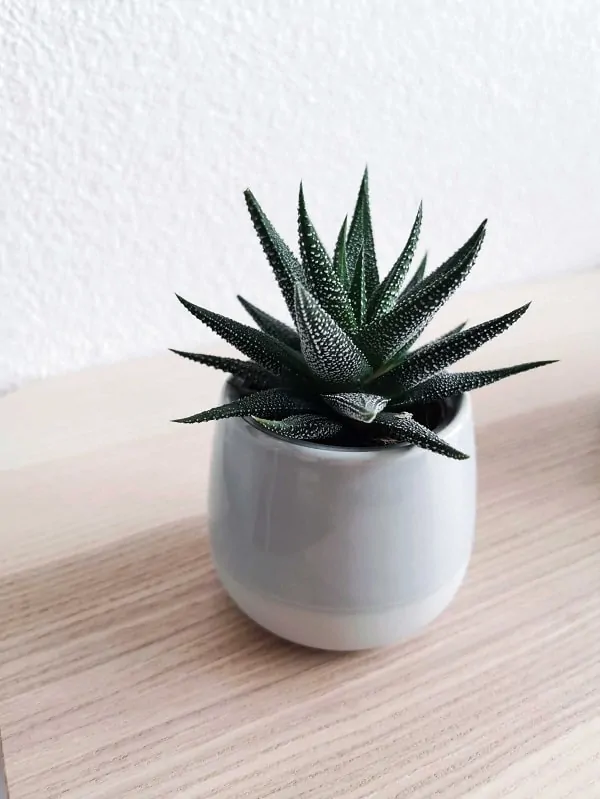
Image credit: Dario via Unsplash
This delicate tiny decorative plant looks like a miniature aloe minus the healing properties. It is called the Zebra Cactus after the white stripes and wart-like tubercles dotting its fleshy dark green leaves. The Zebra cactus is an almost-no-maintenance succulent that is ideal for small spaces such as office desks and windowsills. Just like any other succulent, Haworthia’s only arch nemesis is overwatering so make sure that it gets plenty of drainage.
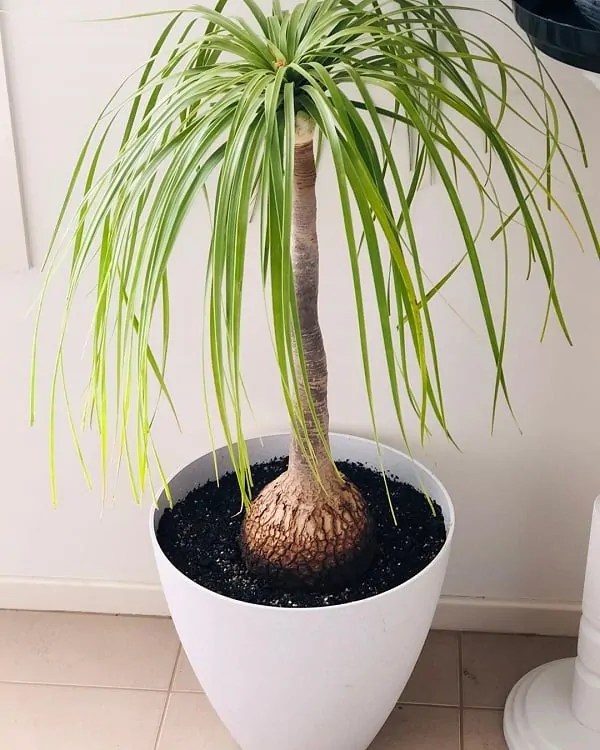
Image credit: Voni_me via Instagram
The Ponytail Palm Tree is a strange-looking bonsai tree-like succulent that is virtually indestructible. This plant can go without water for up to a month and can survive some really harsh conditions. The secret to its hardiness is the bizarre-looking bulb at the base of its trunk which acts as a reservoir just in case a dry spell or a forgetful caregiver might pop up. Unlike other succulent types, the Ponytail decided to store the extra moisture in a bulb-like structure rather than in a set of fleshy leaves. This stunning plant is also known as the Elephant Foot Tree because of its elephant foot-shaped emergency ‘water tank.’
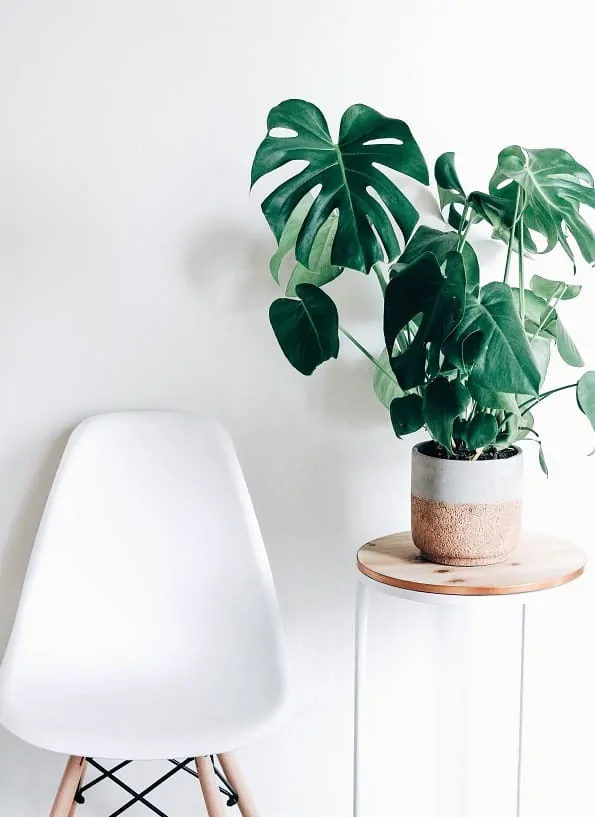
Image credit: Kara Eads via Unsplash
A Swiss Cheese Plant will give any indoor space a big visual push when around. It is the perfect plant for offices because it can go weeks without water, needs no special care, and looks stunning without much effort. Its name is related to the trademark slits on its leaves which resemble the holes in Swiss Cheese (or at least, they did look like it to a very hungry botanist.) This plant is notoriously hard to kill, so it is great to have around busy and forgetful office workers.
Before we conclude this guide on the best plants for office, it is time to answer some of the most frequently asked questions coming from beginner gardeners who want to spruce up their working spaces but do not want to make mistakes.
We recommend you pick some of the most resilient plants to decorate your office. We are talking about plants that resist under-watering, poor nourishment, air conditioning, moving around, etc. Some of the most resilient plants to bring in the office are:
As long as you work with your lights on, your office plants might survive, but don’t expect them to turn into an exotic jungle. If you can offer them the minimum requirements when it comes to light and water, you can enjoy them, especially if you pick the resilient ones. Some of the best plants that will grow in an office without windows are:
The obvious answer to the question “why plants are good for the office” is that plants purify the air. Moreover, indoor plants stabilize and balance the humidity levels in any room, reduce stress, add a good dose of oxygen to your brain to keep you productive, and even alleviate the symptoms of “sick building syndrome.”
Here are 21 of the best office plants that will help liven up even some of the dullest workspaces imaginable. When looking for a great plant for the office, you should be aiming at low-maintenance greenery that can withstand a fairly decent level of abuse and mistreatment and that can go without water for at least a week or two.
We hope you have enjoyed our list. If you have any other great office plants on your mind that we have missed, drop us a line in the comments section below.

Monthly updates on your favorite plants and how to keep them alive, delivered straight to your inbox!
Privacy Policy
This privacy policy outlines what info we gather from our visitors and contributors, the tools we use to collect, store, and protect it, and how we use this information.
Like any other website on the World Wide Web, YouHadMeAtGardening.com records some info about you and your device during your visit. This privacy policy outlines how our team gathers, stores, protects, and uses the information it gathers from visitors of the YouHadMeAtGardening.com website.
By continuing to use this website, you implicitly agree to this policy; if you do not agree to some or all of the procedures listed on this page, you can opt out at any time, however, you might not enjoy the intended browsing experience.
Our team reserves the right to alter this privacy policy with no prior notice to you. However, if the alterations made affect your personal data in any way, you will be notified immediately by email, on our homepage, or here.
Information YouHadMeAtGardening.com Collects
Our systems gather personally and non-personally identifiable information from visitors of the YouHadMeAtGardening.com website.
The only personally identifiable information we collect is your name and e-mail address only when leaving comments if you’re a visitor, or when submitting content and leaving comments, if you’re a contributor.
However, if you are not comfortable with providing your personally identifiable information to us, you can also use an alias instead of your real name and e-mail address without breaking any rules or regulations currently in use.
Note: If you submitted a comment using your personally-identifiable information and want it removed, you can always contact us and we will remove your info in 30 days.
The non-personally identifiable information we collect is your IP address, ISP information, device and browser info, and your browsing patterns – specifically the pages and websites you visit. This information cannot be used to track down your identity.
How We Collect Your Information
We use the following tools to gather personally and non-personally identifiable information from visitors and contributors:
• Cookies: these tiny text documents contain unique identifiers that are stored in your computer after your expressed consent. Cookies collect non-personally-identifiable information about your browsing patterns, which helps us pinpoint the areas of our website that require extra work and the areas that fully meet your needs.
• Log files: These tools record browser and device information, browsing patterns, websites that referred you to the YouHadMeAtGardening.com website, pages our website referred you to, and other types of non-personally identifiable information.
• Sign-up forms: these requests only come up when registering for our newsletter and is the only way our team collects personally-identifiable information from visitors.
How We Protect Your Information
All information we gather, both personally and non-personally identifiable, is stored in systems and databases managed only by the YouHadMeAtGardening.com team. We use the latest security measures to make sure the information you provide and the information we gather stays confidential, such as encryption, user behavior monitoring, and a series of managerial procedures.
How We Use Your Information
We only use your personally and non-personally identifiable information to improve the quality of the website and your browsing experience while here. We want to know which pages and sections of our website satisfy your needs and are of real value to you and which ones need improvement so we can make the proper adjustments. We also use your information to make sure the website is properly displayed on your device and browser.
If you choose to opt in for our newsletter, we will also use your information to keep in touch.
However, know that the YouHadMeAtGardening.com team will never share your information with other parties in exchange for financial rewards or any other kind of benefits. Some third parties might get very limited access to your info, but only to your non-personally identifiable information and only as we described above.
The personally identifiable information you provide is strictly confidential, therefore we will not share it with anyone.
Advertising
This Site is affiliated with CMI Marketing, Inc., d/b/a CafeMedia (“CafeMedia”) for the purposes of placing advertising on the Site, and CafeMedia will collect and use certain data for advertising purposes. To learn more about CafeMedia’s data usage, click here: www.cafemedia.com/publisher-advertising-privacy-policy
